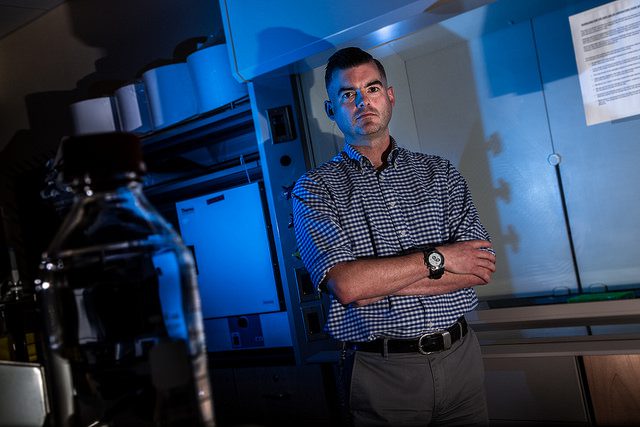Over the course of a lifespan, from conception to death, each person encounters a wide variety of environmental stressors such as pollution, tobacco smoke, the sun’s rays, pharmaceutical agents and some constituents of food. Evidence of the exposure and a person’s ability to metabolize these stressors is all hiding in the urine.
And since these stressors all have the potential to modify a person’s DNA, forming a wide variety of DNA adducts, researchers are finding it more and more important to keep track of them. It turns out, these exposures and the damage they cause, play a major role in the body developing illnesses like cancer, Alzheimer’s disease, cardiovascular disease and others.

An emerging area in environmental health is DNA adductomics, the measurement of all the different kinds DNA adducts present in the cell’s genetic material. A team of researchers including Marcus S. Cooke, professor at FIU’s Robert Stempel College of Public Health and Social Work in the department of environmental health sciences, is now moving the field forward by discovering a novel way to use urine samples to extract the information needed to study the body’s adducts.
This research looks to open new doors to better understand how environmental stressors affect a person’s genetic make-up, why some forms of damage are repaired more easily than others, together with how the damage eventually becomes life-threating illnesses.
“With this new approach, we can learn about human adducts more easily and in a far less invasive manner,” Cooke explained. “The best part is that the urine actually provides a fuller picture of the DNA damage, and its repair, than previous methods.”
DNA adductomics has typically used tissue samples, such as blood, to study the damage. However, this approach is difficult to apply to human populations, thus limiting who can be studied. Understanding from what environmental exposures these modifications arise, and their natural repair system in the body, could lead to life-saving interventions.
“By looking at what in the environment damages our DNA, and potentially identifying whether some individuals repair that damage better (or worse) than others, we can better understand the process of how and why illnesses form and, potentially, find interventions,” Cooke continued.
Currently, 50 percent of adults in the U.S. report suffering from one of six chronic illnesses: cardiovascular disease, cancer, cardiopulmonary disease, asthma diabetes, or arthritis. Studying DNA adducts brings medicine one-step closer to finding the causes of these illnesses and, potentially, the cure.
This study is supported, in part, by the National Institute of Environmental Health Sciences (NIEHS) grant R15ES027196 to M.S. Cooke and by Taiwan Ministry of Science and Technology grant MOST 106-2314-B-040-015-MY3 to M.R. Chao.





